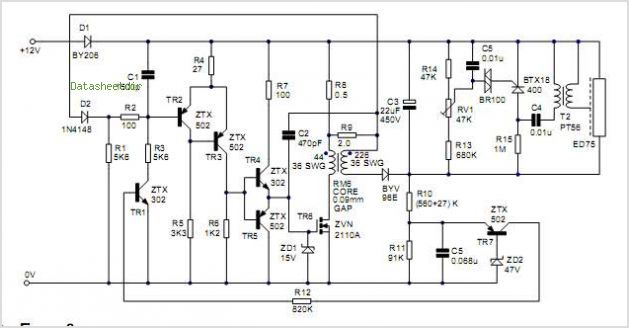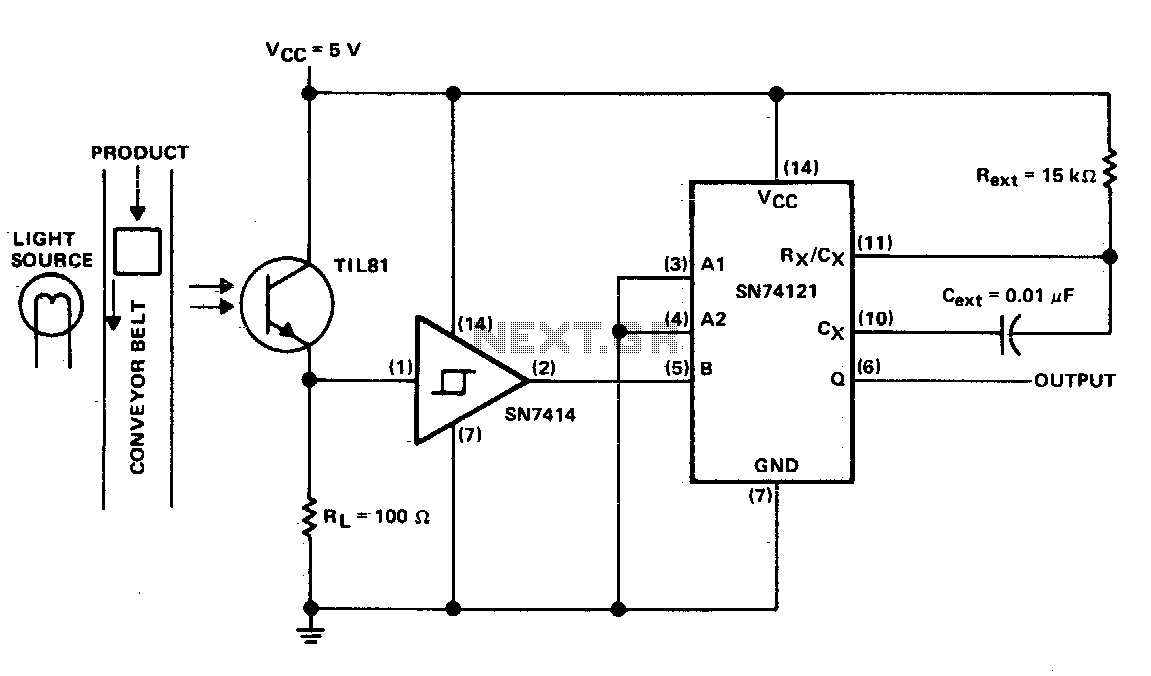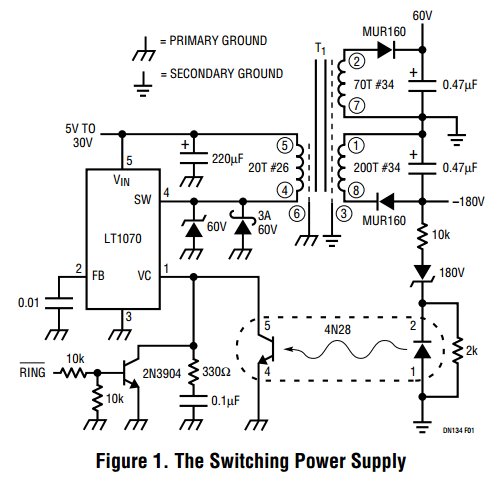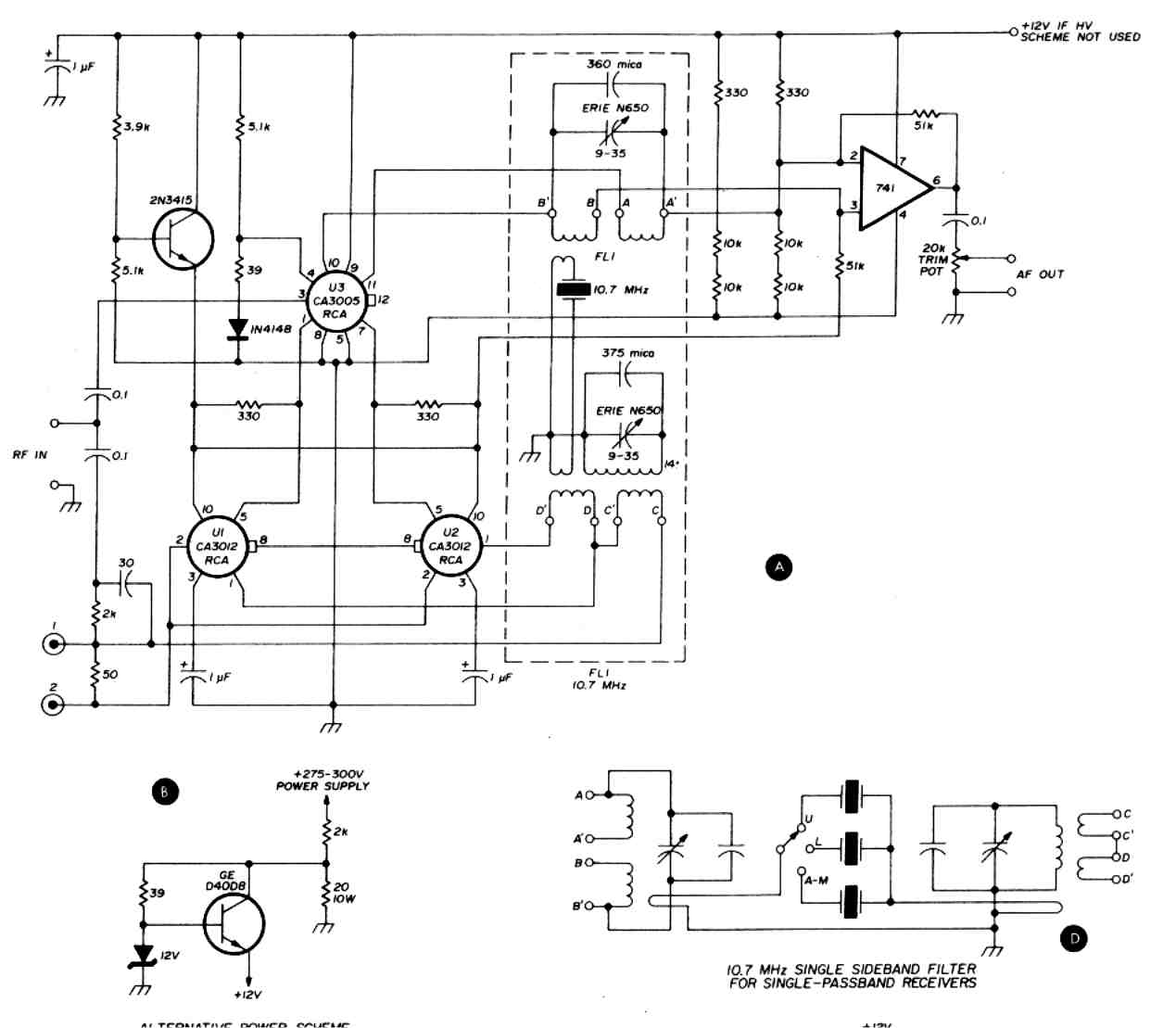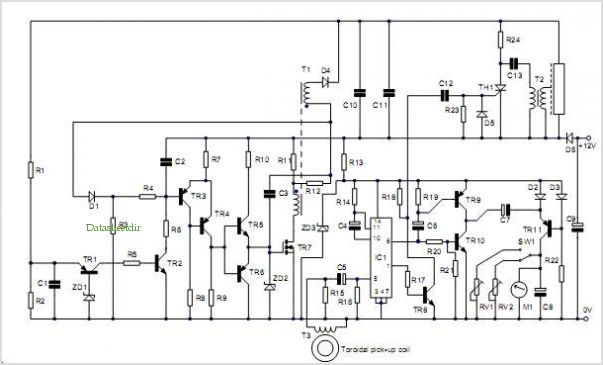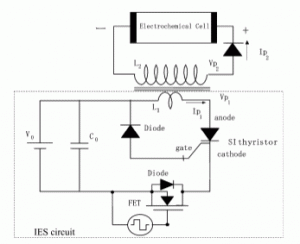
Generation of 1-Sec Pulses Spaced 5-Sec Apart
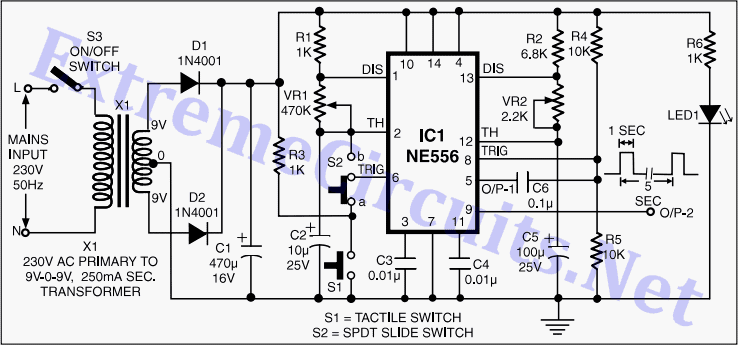
This circuit utilizes a dual-timer NE556 to generate 1Hz pulses spaced 5 seconds apart, with the option for manual or automatic operation. The NE556 integrated circuit (IC) consists of two independent timers.
The NE556 timer is a versatile device that combines two 555 timer circuits into a single package, allowing for various timing applications. In this particular configuration, it is set up to produce a square wave output at a frequency of 1Hz. This is achieved by configuring one of the timers in astable mode, where the timing components, specifically resistors and capacitors, determine the frequency and duty cycle of the output pulse.
To create 1Hz pulses, the circuit requires specific resistor and capacitor values calculated using the formula for the frequency of an astable multivibrator. The frequency (f) is given by the equation:
f = 1.44 / ((R1 + 2*R2) * C)
Where R1 and R2 are the resistances connected to the discharge and threshold pins of the timer, and C is the capacitance connected to the timing capacitor pin. For a frequency of 1Hz, appropriate values for R1, R2, and C must be selected to meet this requirement while ensuring the desired pulse width.
The NE556 allows for both manual and automatic operation of the timing circuit. In manual mode, a switch can be integrated to start and stop the pulse generation at the user's discretion. In automatic mode, the circuit can continuously generate pulses without user intervention, making it suitable for applications such as LED blinking, clock generation, or timing applications in various electronic devices.
The output from the NE556 can be connected to various loads, such as LEDs or relays, to indicate the timing intervals visually or to control other circuits. Proper decoupling capacitors should be placed close to the power supply pins of the NE556 to ensure stable operation and minimize noise.
Overall, this circuit design using the NE556 timer provides a simple yet effective solution for generating timed pulses in a variety of electronic applications.This circuit using a dual-timer NE556 can produce 1Hz pulses spaced 5 seconds apart, either manually or automatically. IC NE556 comprises two independent.. 🔗 External reference
The NE556 timer is a versatile device that combines two 555 timer circuits into a single package, allowing for various timing applications. In this particular configuration, it is set up to produce a square wave output at a frequency of 1Hz. This is achieved by configuring one of the timers in astable mode, where the timing components, specifically resistors and capacitors, determine the frequency and duty cycle of the output pulse.
To create 1Hz pulses, the circuit requires specific resistor and capacitor values calculated using the formula for the frequency of an astable multivibrator. The frequency (f) is given by the equation:
f = 1.44 / ((R1 + 2*R2) * C)
Where R1 and R2 are the resistances connected to the discharge and threshold pins of the timer, and C is the capacitance connected to the timing capacitor pin. For a frequency of 1Hz, appropriate values for R1, R2, and C must be selected to meet this requirement while ensuring the desired pulse width.
The NE556 allows for both manual and automatic operation of the timing circuit. In manual mode, a switch can be integrated to start and stop the pulse generation at the user's discretion. In automatic mode, the circuit can continuously generate pulses without user intervention, making it suitable for applications such as LED blinking, clock generation, or timing applications in various electronic devices.
The output from the NE556 can be connected to various loads, such as LEDs or relays, to indicate the timing intervals visually or to control other circuits. Proper decoupling capacitors should be placed close to the power supply pins of the NE556 to ensure stable operation and minimize noise.
Overall, this circuit design using the NE556 timer provides a simple yet effective solution for generating timed pulses in a variety of electronic applications.This circuit using a dual-timer NE556 can produce 1Hz pulses spaced 5 seconds apart, either manually or automatically. IC NE556 comprises two independent.. 🔗 External reference
